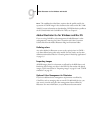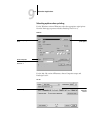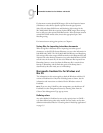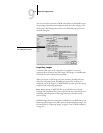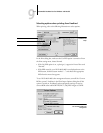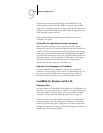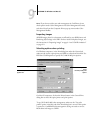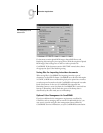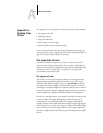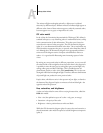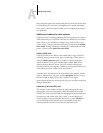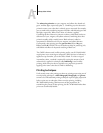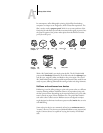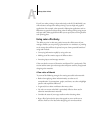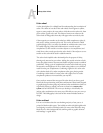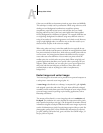
A
A-1 Desktop Color Primer
This appendix covers concepts that are basic to printing in color, including:
• The properties of color
• Printing techniques
• Using color effectively
• Raster images and vector images
• Optimizing files for processing and printing
If you are already familiar with color theory and digital color printing, you
can skip to the last section (“Optimizing files for processing and printing” on
page A-9) for tips on optimizing files for printing.
The properties of color
This section introduces concepts that are basic to color theory. You will
encounter some of these concepts (such as hue, saturation, and brightness)
when you work with color in applications; others provide useful background
information. Color is a complex topic, so consider this a starting point for
experimentation and further research.
The physics of color
The human eye can see electromagnetic radiation at wavelengths between
400 nanometers (purplish blue) and 700 nanometers (red). This range is
called the visible spectrum of light. We see pure spectral light as intensely
saturated or pure colors. Sunlight at midday, which we perceive as white or
neutral light, is composed of light from across the visible spectrum in more or
less equal proportions. Shining sunlight through a prism separates it into its
spectral components, resulting in the familiar rainbow of colors (plate 1).
Like the sun, most light sources we encounter in our daily environment emit
a mixture of light wavelengths, although the particular distribution of
wavelengths can vary considerably. Light from a tungsten light bulb, for
example, contains much less blue light than sunlight. Tungsten light appears
white to the human eye, which, up to a point, can adjust to the different light
sources. However, color objects appear different under tungsten light than
they do in sunlight because of the different spectral makeup of the two light
sources.
Appendix A:
Desktop Color
Primer



